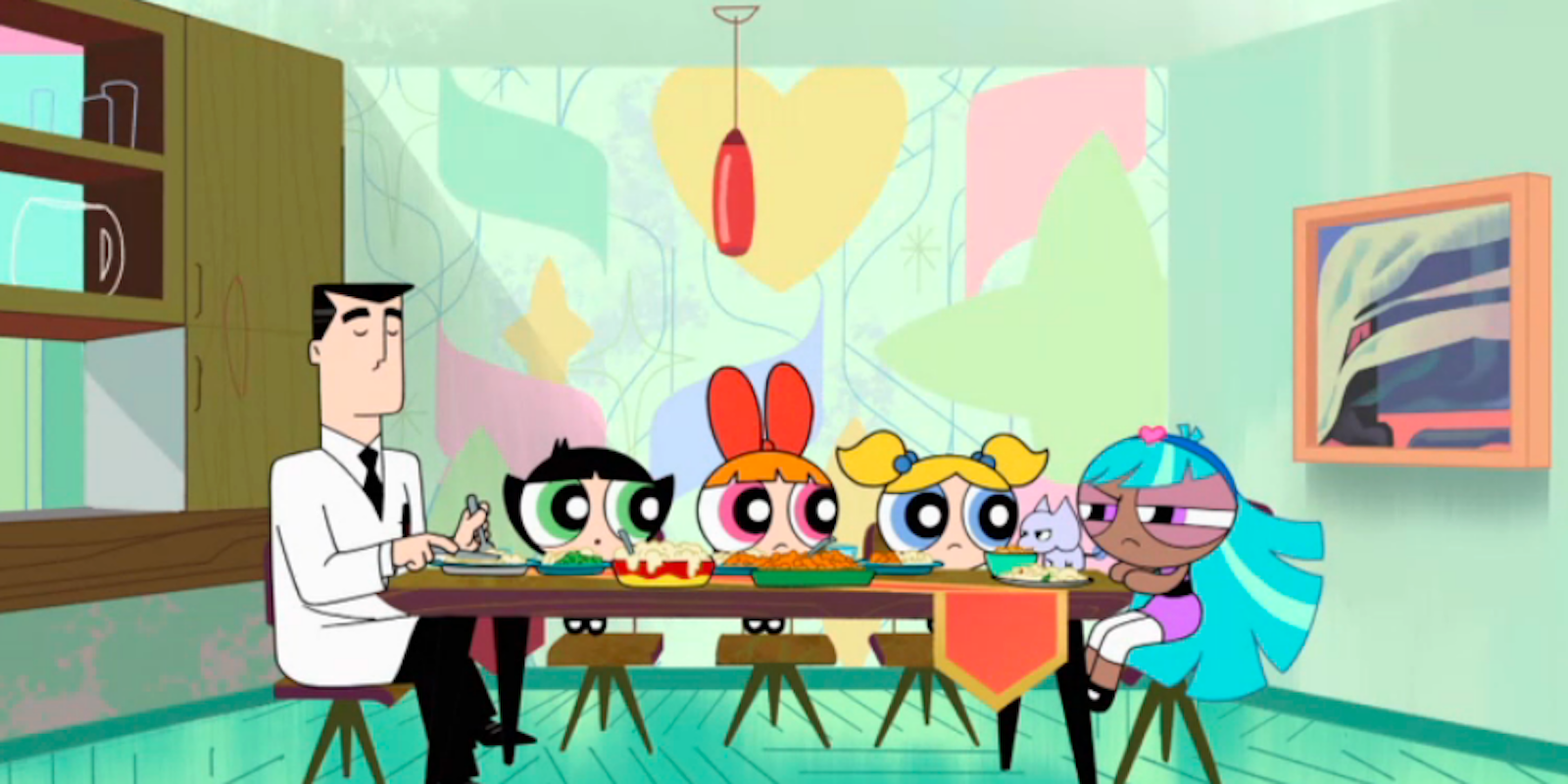Opinion
As a longtime fan of the Powerpuff Girls, I was drawn to what seemed like a rarity in cartoons: three superhero main characters that were female. These feisty kindergartners could kick some serious butt yet also deal with everyday things like friendship, sisterhood, and the occasional intrasquad squabble.
The equal balance of action and jokes turned the Powerpuff Girls into quintessential feminist icons for Gen Xers and millennials. So it was even cooler when Cartoon Network announced earlier this month that it would be introducing a fourth official Powerpuff Girl with remarkably dark skin.
Welcome to the family Bliss! ❤️💚💙💜 #PowerpuffGirls #Bliss pic.twitter.com/ZhDmI99LRG
— Cartoon Network (@cartoonnetwork) September 17, 2017
Kayla Sutton, social media curator and a contributor for digital publication Black Girl Nerds, cried when the new Powerpuff Girl, Bliss, was unveiled. “We don’t get many black cartoon characters and when we do, we’re just the comic relief,” Sutton said via email.
https://twitter.com/Rainbow_Smiley/status/906372846875750401
https://twitter.com/trustnorminah/status/905545145403232262
https://twitter.com/whoresmad/status/905563706070839296
But the thing is, neither Cartoon Network, nor the show’s creators, have explicitly said Bliss is Black. And therein lies, at least part of, the problem.
Blisstina “Bliss” Francesca Francia Mariam Alicia Utonium made her debut last weekend as part of the network’s one-hour Power of Four special movie series. She finally appears at the 10-minute mark and we see the girls helping her gain control of her powers, which tend to go wild because of her emotions. In the climax, Bliss mistakenly betrays her sisters before the four Powerpuffs work together to defeat the villain. Then Bliss disappears and we’re not sure if she’s ever going to return.
While Bliss’s Blackness isn’t important enough to be mentioned, it is prominent enough to be a caricature: Bliss is drawn with wide hips, “uncontrollable” emotions, and a father who wasn’t around for most of her life. If writers were serious about her character and inclusivity, it would’ve created a more nuanced and less insensitive scene than Bliss blowing up her home because she was upset over milk.
Suffice to say, many fans were nonplussed with Bliss being portrayed as a stereotype of an angry Black girl.
Everyone when they see the new Powerpuff girl: Why is the black powerpuff girl so thicc?
— Larry Lurr (@LarryLurr) September 18, 2017
Me: Why the FUCK is her hair that color?!?! pic.twitter.com/BvXPnW6Yh2
https://twitter.com/QueerXiChisme/status/910603490333822976
I didn’t even notice the hips at first. Smh
— April 13th (@NickiiKurosaki) September 10, 2017
so did the writers of PPG 2016 think through how the black powerpuff girl being the mistake and being abandoned by her father would look
— kev (@AwestruckVox) September 15, 2017
So I’m watching the #powerpuffgirls with the new powerpuff and why the black girl gotta be dangerous and uncontrollable?!?!
— Alisha (@______SimplyMe) September 17, 2017
While Paula Poindexter, who teaches media representation of African Americans at the University of Texas, sees it as a positive that there is even a person of color in cartoons at all, she does express some concern about Bliss’s characterization as an emotional teenager who can’t control herself.
“If they don’t do anything else with her other than have her appear in this new episode, not to mention she doesn’t even appear until 10 minutes into the episode, all of the things that on one hand are positive become negative because essentially they’ve made a token,” Poindexter said.
Then, there is the missed opportunity to address her race at all. Cartoon Network approached her character from a colorblind perspective. Color-blindness implies race does not matter—an assumption only white people can make because they’ve never had to walk in brown or black skin.
Hollywood’s historical lack of Black characters belies this notion. An Essence report from 2013 found that Black women are commonly surrounded by negative depictions twice as often as positive depictions. Bliss was an opportunity to directly address a demographic that often sees themselves represented as mammies, sexually deviants, and unfit mothers. But that opportunity wasn’t taken.
While some fans are saying everyone’s being too sensitive, that this is just a cartoon meant for children, I say that makes it just as important, if not more, that the Powerpuff Girls writers get the Black girl right. As a young girl, I would’ve loved to see a Black character in my favorite cartoon Totally Spies. I think of how much my niece loves Doc McStuffins, one of the few cartoons with a Black lead, and how she was so excited to get a doll for Christmas.
In many ways, the Powerpuff writers’ approach to Bliss feels more like an attempt to hop on diversity trends like #blackgirlmagic and #melaninonfleek without bothering to develop a well-rounded character. It’s a poor attempt at fitting in (and cashing in) on black empowerment movements without doing the sensitive, thought-through work.
A fuller characterization of Bliss that encompasses her racial identity would let Black children know that it matters that they’re represented. It would make them feel seen and understood, instead of just reminding them that society marks them as an “other” with wild emotions and large hips.


